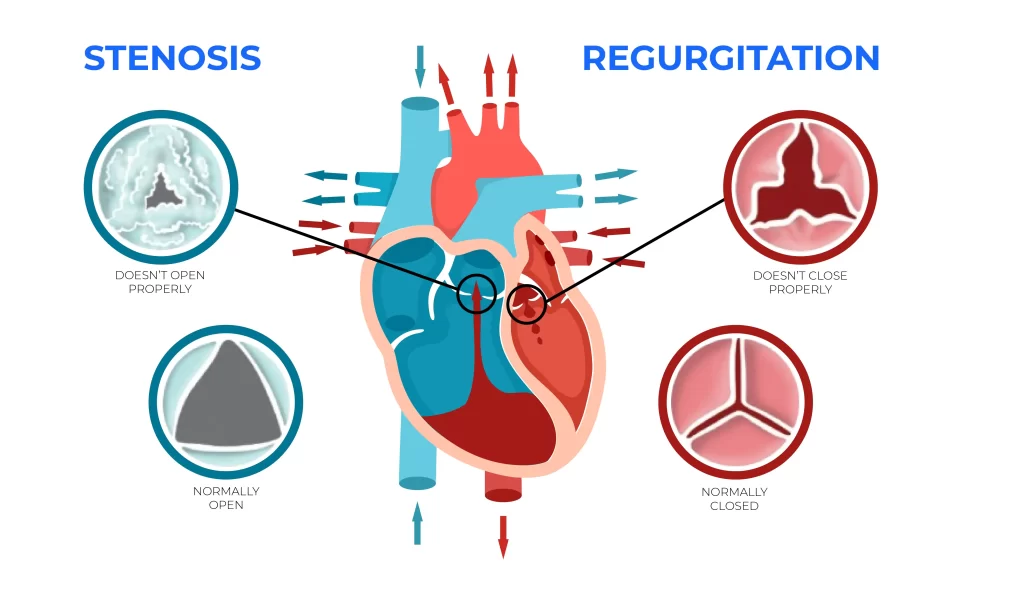- 614-389-3130
- contactus@dasisim.com
Patient Resources
PATIENT RESOURCES
What is structural heart disease?
Structural heart disease encompasses a range of conditions affecting vital components such as the heart's valves, walls, chambers, or muscles. Whether present from birth (congenital) or developing over time, these abnormalities demand attention for optimal health. Left untreated, structural heart disease can lead to various health complications over time.
Structural heart disease can impact anyone, irrespective of gender, ethnicity, or race. While certain issues may have a familial tendency, the risk increases with age. Factors during pregnancy, such as exposure to certain substances or infections, can also contribute. More than 10% of adults over 75 years old are affected by structural heart disease.
- Heart Valve Disease: Involves issues with the valves controlling blood flow.
- Cardiomyopathy: A disease affectning the heart muscle.
- Congenital Heart Disease: Structural problems existing from birth.
Heart Valve Disease can manifest in any of the four valves and occurs in one of two ways:
Stenosis is the stiffening and/or thickening of the valve, making it difficult to move and open for blood to flow through. Regurgitation is the incorrect closure of a valve allowing for backflow (blood to move in the opposite direction of what it is supposed to).

Heart Valve Disease Can
Lead To
Major Health Risks
If left untreated, heart valve disease can lead to major health risks such as stroke, blood clots, and even death. Many of those with heart valve disease may go their entire lives without realizing they even have it as some cases do not produce any symptoms. The course of action for fixing heart valve disease is surgery on the damaged valve. Previously, this required open-heart surgery; however, with today’s medical advancements, this is no longer the case. Read below on TAVR and TMVR to learn about the new surgical solutions.
Transcatheter Aortic Valve Replacement
What is TAVR?
Transcatheter Aortic Valve Replacement (TAVR), also known as Transcatheter Aortic Valve Implantation (TAVI), is a minimally invasive alternative to the traditional open-heart surgery used to treat heart valve disease. As the name suggests, this method is used for treating damaged aortic valves specifically. TAVR involves physicians primarily taking a transfemoral approach, meaning a catheter is inserted into the patient’s femoral artery in their leg. The catheter can also be inserted into an artery in the chest. Either approach is much less invasive than the traditional open-heart surgery that would require the breaking of the ribcage to gain access to the valve. When the catheter is inserted into either artery, physicians use medical imaging technology to guide the catheter to the damaged valve and place the replacement valve. Valve implants are either deployed on their own or via a balloon at the tip of the catheter.
Transcatheter MITRAL Valve Replacement
What is TMVR?
Like TAVR, the Transcatheter Mitral Valve Replacement (TMVR), is a minimally invasive approach to treating heart valve disease. TMVR focuses on the mitral valve rather than the aortic valve which TAVR repairs. The mitral and aortic valves are located on different sides of the same chamber of the heart; therefore, the same approach can be used to approach both: the femoral artery.
DASi'S Technology
How Our Simulations Help
DASI Simulation’s predictive modeling software analyzes individual patient data and provides physicians with information about patient’s personal heart anatomy. DASI technology uses algorithms to analyze various approaches to TAVR or TMVR procedures, how valves would fit with specific anatomy, and valve implantation locations. By considering this wide range of factors, DASI’s technology can help to greatly reduce complication rates, length of stay in hospitals, and even death rates.
*The models featured in these videos are digital representations of manufacturers’ valves.
